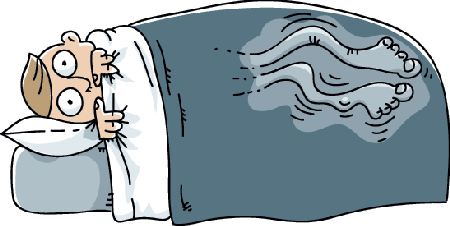Restless Legs/Periodic Limb Movement Syndrome
What are period limb movements (PLMS)?
Periodic Limb Movement Syndrome (PLMS) is a disorder that affects people only during sleep, and usually includes any repetitive, involuntary movement during the night.
PLMs are involuntary muscle twitches, which occur repeatedly during sleep, disrupting a person’s sleep pattern and thereby causing daytime sleepiness.
Movements typically occur for 0.5 to 10 seconds
Prevalence of periodic limb movements

The incidence of PLMs increases with age
It is thought to occur in 5% of people age 30 to 50 and in 44% of people over the age of 65. PLMs can also be associated with other sleep disorders – up to 12.2% of people suffering from insomnia and 3.5% of people suffering from excessive daytime sleepiness (EDS) may experience PLMs.
How are PLMs Diagnosed?
Often, medical investigation is prompted by the sufferer’s sleep partner, who observes the occurrence of PLMs — this usually affects the partner before the sufferer even knows of their behavior.
The medical diagnosis is made during an overnight polysomnogram (Sleep Study), which records your sleep. This test is often used to assess the cause of excessive daytime sleepiness.
What is Restless Leg Syndrome (RLS)?
Restless Leg Syndrome (RLS) is a common complaint characterised by irritable legs often described as crawling, itching or a “pins and needles” feeling under the skin.
Approximately 80% of people with RLS also suffer from Periodic Leg Movements.
Indicators of Restless Leg Syndrome
- You have a strong urge to move your legs which you may not be able to resist. The need to move is often accompanied by uncomfortable sensations.
- Your symptoms start or become worse when you are resting. The longer you are resting, the greater the chance the symptoms will occur and the more severe they are likely to be.
- Your symptoms are worse in the evening especially when you are lying down.
- Symptoms get better when you move your legs. The relief can be complete or only partial, but generally starts very soon after starting an activity, and relief persists as long as you continue to move your legs.
How is RLS diagnosed?
RLS can be difficult to identify because it presents no external secondary symptoms. The diagnosis of RLS is based on the patient’s description and personal history.
Patients can also complete a RLS Diary which will offer an overview of the patient’s sleep experience and effects of RLS, such as Excessive Daytime Sleepiness (EDS), which can also be measured by completing the Epworth Sleepiness Scale.
Important Note
It is important to distinguish PLMS from other more serious types of nocturnal movement, such as seizure. Nocturnal seizures present problems for patients because they can cause injury and are indicative of disorders that require specialized treatment.
Also, iron and calcium deficiencies often produce symptoms that mirror RLS, such as leg cramping and tenderness, so please see your doctor if you suffer from these symptoms.